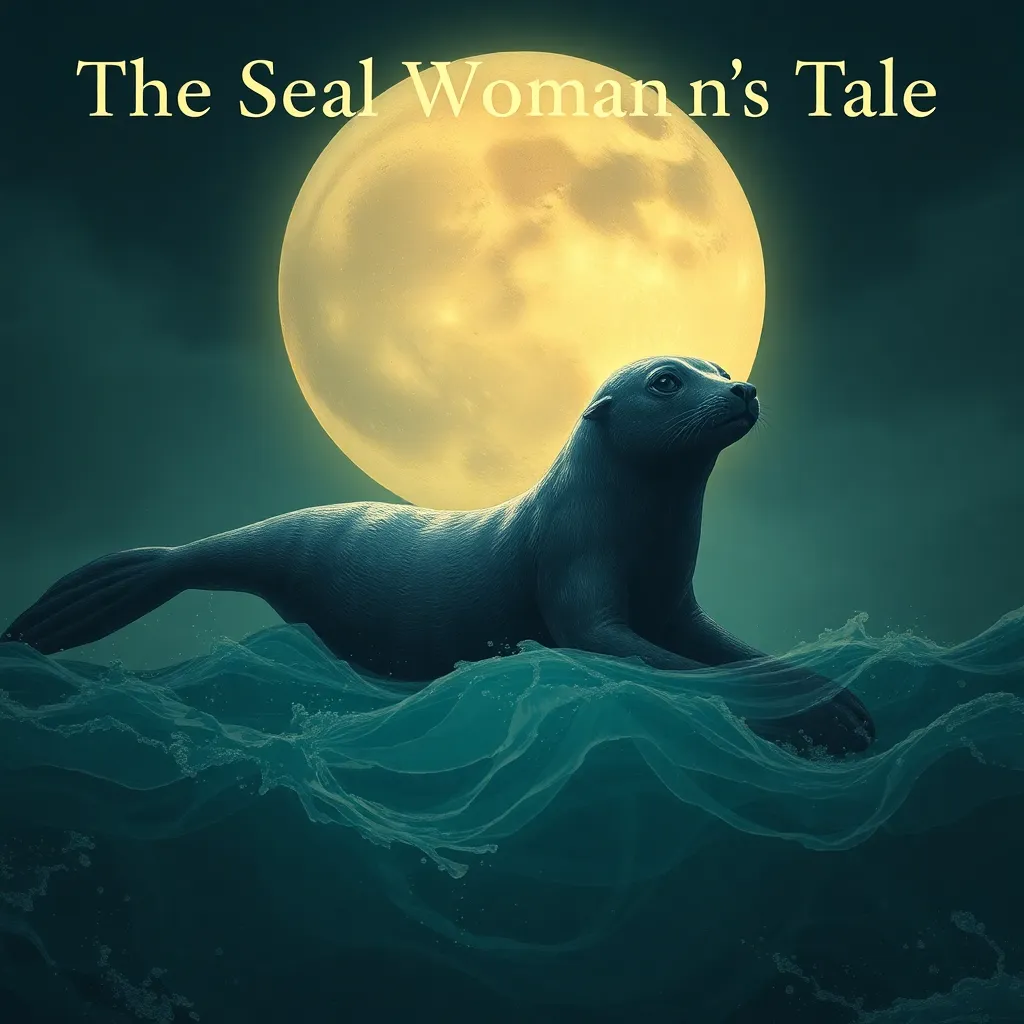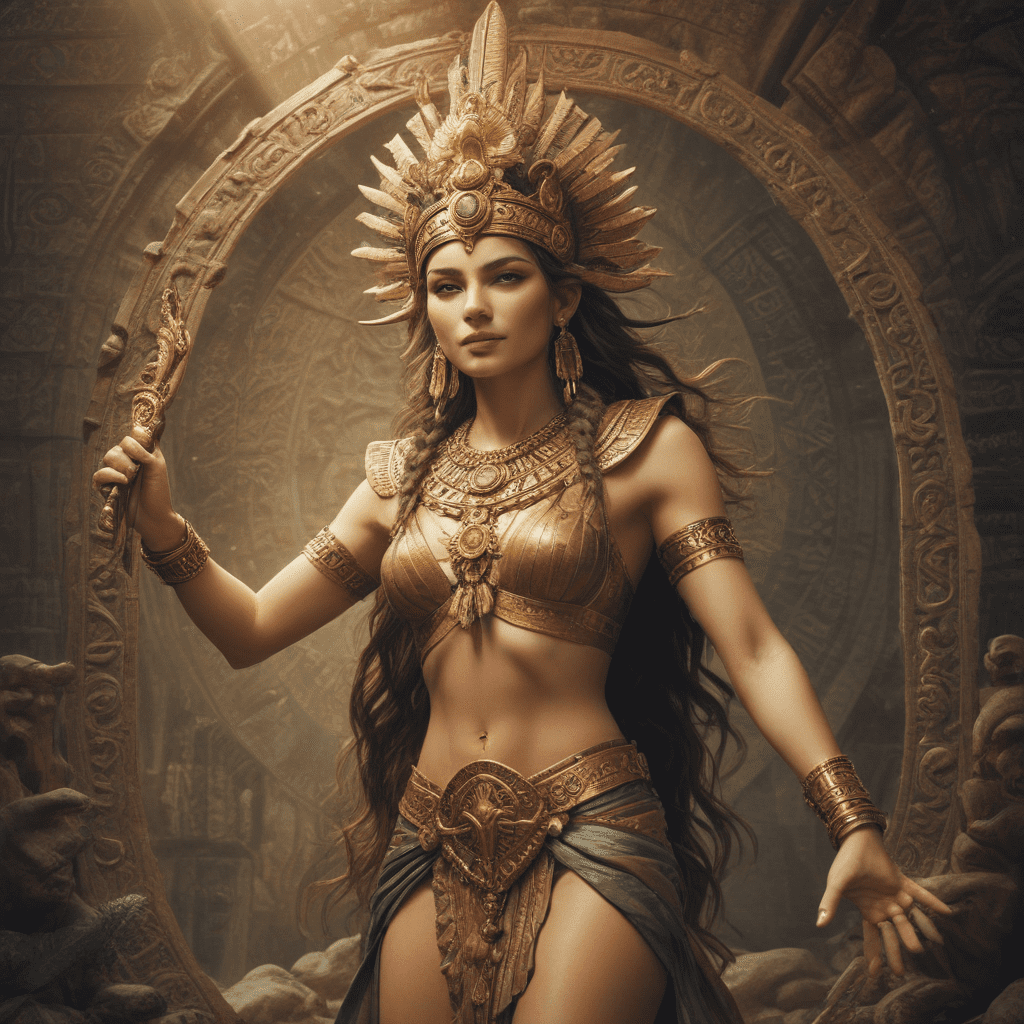The Seal Woman’s Tale: Unraveling the Origins of the Selkie Myth
I. Introduction
The Selkie myth, a captivating tale rooted in the folklore of the Celtic and Norse cultures, tells the story of shape-shifting seal women who can transform into beautiful humans. These enchanting beings embody the connection between land and sea, offering a rich tapestry of narrative that has fascinated audiences for centuries.
One of the most significant stories within this mythos is the Seal Woman’s Tale, which not only highlights the magical qualities of these creatures but also delves deep into themes of love, loss, and identity. This article aims to explore the origins and significance of the Selkie myth, examining its historical background, symbolism, variations, and cultural significance in both past and modern contexts.
II. Historical Background of the Selkie Myth
The origins of the Selkie myth can be traced back to ancient Celtic and Norse folklore. These stories are prevalent in regions such as Scotland, Ireland, and Iceland, where the sea has always played a pivotal role in the lives of coastal communities.
Over time, the Selkie myth has evolved, adapting to changing societal norms and values. Initially, Selkies were seen merely as magical beings of the sea, but as cultures progressed, their tales began to reflect deeper human emotions and relationships.
A. Origins in Celtic and Norse folklore
In both Celtic and Norse traditions, the myth of the Selkie is intertwined with the idea of shape-shifting. These legends often portray Selkies as seals who can shed their skins to become human, emphasizing their dual nature.
B. Geographic regions associated with Selkie legends
- Scotland: Particularly in the Orkney and Shetland Islands, where stories of Selkies are deeply embedded in local culture.
- Iceland: Selkies play a significant role in Icelandic folklore, often depicted in tales that highlight their mystical attributes.
- Ireland: The Irish variation includes tales of Selkie women who are often captured by fishermen, leading to themes of love and loss.
C. Evolution of the myth through time
As the Selkie myth traveled through generations, it absorbed elements from various cultures, leading to a rich diversity of interpretations. From oral traditions to written accounts, the Selkie narrative has maintained its allure while adapting to contemporary themes.
III. The Symbolism of Selkies
At the heart of the Selkie myth lies profound symbolism that speaks to the human experience. Selkies represent the duality of existence, illustrating the struggle between the call of the sea and the ties of the land.
A. Representation of duality: land and sea
Selkies embody the conflict between two worlds. They are both creatures of the sea, representing freedom and mystery, and beings of the land, representing domesticity and human connection.
B. Themes of transformation and identity
The ability of Selkies to transform from seals to humans raises questions about identity and the nature of self. This transformation mirrors personal growth and the complexities of human relationships.
C. Connection to human emotions and relationships
The Selkie tales often explore themes of longing, loss, and the search for belonging. They resonate with anyone who has experienced the bittersweet nature of love and separation.
IV. Key Variations of the Selkie Tale
While the core elements of the Selkie myth remain consistent, various regional variations provide unique perspectives on the tale.
A. The traditional tale of the Seal Woman
The classic story involves a fisherman who captures a Selkie woman by stealing her seal skin. She becomes his wife and bears him children, but ultimately, she yearns for the sea and returns to her true form, leaving him heartbroken.
B. Regional variations: Scotland vs. Iceland
In Scotland, Selkie tales often emphasize the sorrow of lost love and the connection to the sea, while Icelandic variations may focus more on the mystical aspects of Selkies and their interactions with humans.
C. Contemporary adaptations in literature and film
Modern interpretations of the Selkie myth can be found in various media, from literature to film. Works like “The Secret of Roan Inish” and novels by authors such as Julia Leigh explore the Selkie narrative through contemporary lenses, often intertwining it with environmental themes and personal identity.
V. Cultural Significance of the Selkie Myth
The Selkie myth holds a significant place in the cultural heritage of coastal communities. It serves as a reminder of the close relationship between humans and the sea.
A. Role in coastal communities and maritime culture
For fishing communities, Selkie stories were not just entertainment but also moral tales that conveyed respect for the ocean and its inhabitants.
B. Influence on art, music, and storytelling
Selkies have inspired countless artists, musicians, and storytellers. Their mystique is reflected in traditional songs, contemporary music, and visual art, showcasing the enduring appeal of these mythical beings.
C. Reflection of societal values and human experiences
The themes embedded in Selkie myths often reflect societal values such as the importance of family, the consequences of greed, and the longing for freedom, providing insight into the human condition.
VI. The Selkie in Modern Context
In recent years, the Selkie myth has seen a resurgence, with renewed interest in folklore and mythology across various platforms.
A. Reinterpretations in contemporary media
Modern filmmakers and writers have reimagined the Selkie myth, often focusing on its emotional depth and environmental themes. These reinterpretations breathe new life into the ancient tales.
B. Revival of interest in folklore and mythology
The growing trend of exploring folklore in literature and media reflects a societal desire to reconnect with cultural roots and understand the narratives that shape our identities.
C. The Selkie myth as a metaphor for environmental issues
Today, Selkies can also symbolize the fragility of marine ecosystems and the impact of climate change, serving as a poignant reminder of our connection to the natural world.
VII. Comparative Analysis with Other Mythical Beings
When examining the Selkie myth, it is valuable to compare it with other mythical beings, particularly mermaids and shape-shifters from different cultures.
A. Similarities to mermaids and other shape-shifters
Like mermaids, Selkies possess the ability to shift between two forms, representing the allure and danger of the sea. Both mythical beings often symbolize the complexities of love and desire.
B. Cross-cultural connections and differences
Various cultures have their own versions of shape-shifting sea creatures. For instance, the Japanese “Umibōzu” and the Native American “Water Spirits” share thematic similarities with Selkies, showcasing the universal nature of these myths.
C. Impact on global folklore and mythology
The Selkie myth has influenced global folklore, inspiring stories that echo the themes of transformation, identity, and the relationship between humanity and nature.
VIII. Conclusion
In summary, the Selkie myth, particularly the Seal Woman’s Tale, provides a rich exploration of themes such as duality, transformation, and the emotional landscape of human relationships. Its historical roots, cultural significance, and modern interpretations highlight the enduring legacy of this captivating folklore.
As we continue to engage with these tales, we are invited to reflect on our own identities and the world around us. The Selkie myth remains a powerful narrative that speaks to the heart of what it means to be human, making it a timeless subject for further exploration in folklore and its myriad meanings.



